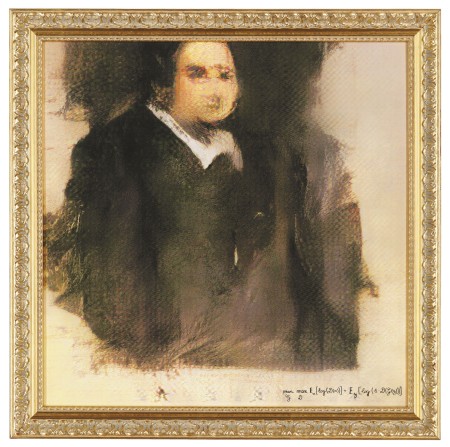The picture generated by the neural network went under the hammer for $ 432,500

“Edmond de Belami, from the family of de Belamie. A controversial neural network, canvas printing, 2018. Signed by the loss function of the GAN model by the ink publisher, from a series of eleven unique images published by Obvious Art, Paris, in an original gilded wooden frame. ” - this is the description of lot 363 , which yesterday was sold at Sotheby’s for $ 432,500.
The total cost of the lot was unexpected for the auction house experts, who initially estimated the picture in the range from $ 7,000 to $ 10,000. But this is also a good salary for a neural network programmer, as it can generate such pictures in thousands.
This work was put up for auction by a group of French entrepreneurs Obvious. The lot went to an anonymous buyer, who participated in the auction by telephone from France.
Art is a good and potentially very profitable use of neural networks: “We would like to thank the AI community, especially those who pioneered this new technology, including Ian Goodfellow, the creator of the GAN algorithm, who inspired the name of the series Famille de Belamy, and the artist Robbie Barrata, who had a great influence on us, said Obvious. “This is an exciting moment, and we hope that this sale will draw attention to the amazing work our predecessors and colleagues have done.”
')
Robbie Barrath himself on Twitter provides some examples of great art that generates well-trained competitive neural networks.
The programmer and artist Robbie Barrath is a pioneer in the generation of painting using neural networks. By the way, after the auction, he stated that the picture “Edmond de Bellamy” was generated using his program code, which he published in the public domain more than a year ago.
The Obvious group admitted using Barrat’s code but changing it.
Other modern software artists, including Mario Klingemann and Anna Ridler, use neural networks in painting.
Source: https://habr.com/ru/post/427835/
All Articles